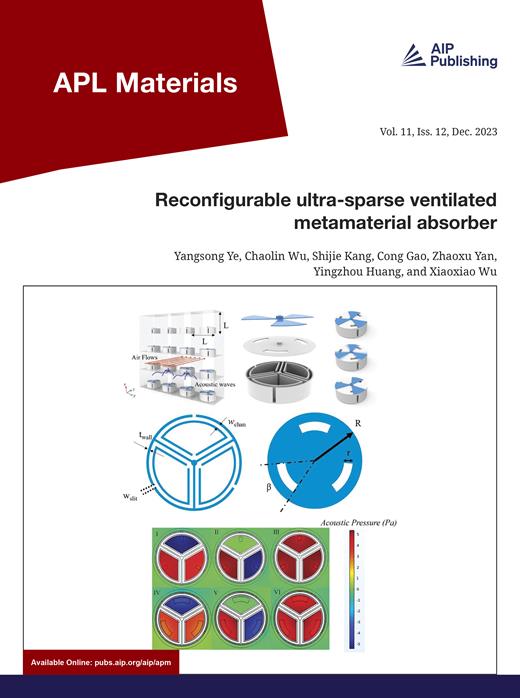Angle-free random laser enabled efficient photocatalytic degradation of Rhodamine 6G molecules
IF 5.3
2区 材料科学
Q2 MATERIALS SCIENCE, MULTIDISCIPLINARY
引用次数: 0
Abstract
Efficient photocatalytic dye degradation has been realized based on the first attempt of using a random laser. In previous studies, most photocatalytic dye degradation was conducted by using broad-angular emission lamps, light-emitting diodes, and conventional lasers. However, these types of light sources could be restricted by some disadvantages, such as weak intensity or high directionality. Unlike traditional lasers, random lasers obviate the need for the cavity. The advantage of broad-angular emission lights and the feature of laser-level intensity make random lasers a promising light source for many potential applications. In this study, an ultraviolet random laser (UVRL) derived from zinc oxide (ZnO) was used in the photocatalytic dye degradation experiment. It is found that the degradation efficiency of the UVRL is much better than that of conventional lasers and ultraviolet light-emitting diodes. The success of applying random laser systems in the photocatalytic reaction is expected to expand the applications of random lasers.无角随机激光实现了罗丹明6G分子的高效光催化降解
在首次尝试使用随机激光的基础上,实现了有效的光催化染料降解。在以往的研究中,大多数光催化染料降解是通过使用广角发光灯、发光二极管和传统激光器进行的。然而,这些类型的光源可能受到一些缺点的限制,例如弱强度或高方向性。与传统激光器不同,随机激光器不需要腔体。宽角发射光源的优点和激光级强度的特点使随机激光器在许多潜在的应用中成为一个很有前途的光源。本研究利用氧化锌(ZnO)衍生的紫外随机激光器(UVRL)进行光催化染料降解实验。研究发现,UVRL的降解效率大大优于传统激光器和紫外发光二极管。随机激光系统在光催化反应中的成功应用有望扩大随机激光的应用范围。
本文章由计算机程序翻译,如有差异,请以英文原文为准。
求助全文
约1分钟内获得全文
求助全文
来源期刊

APL Materials
NANOSCIENCE & NANOTECHNOLOGYMATERIALS SCIE-MATERIALS SCIENCE, MULTIDISCIPLINARY
CiteScore
9.60
自引率
3.30%
发文量
199
审稿时长
2 months
期刊介绍:
APL Materials features original, experimental research on significant topical issues within the field of materials science. In order to highlight research at the forefront of materials science, emphasis is given to the quality and timeliness of the work. The journal considers theory or calculation when the work is particularly timely and relevant to applications.
In addition to regular articles, the journal also publishes Special Topics, which report on cutting-edge areas in materials science, such as Perovskite Solar Cells, 2D Materials, and Beyond Lithium Ion Batteries.
 求助内容:
求助内容: 应助结果提醒方式:
应助结果提醒方式:


